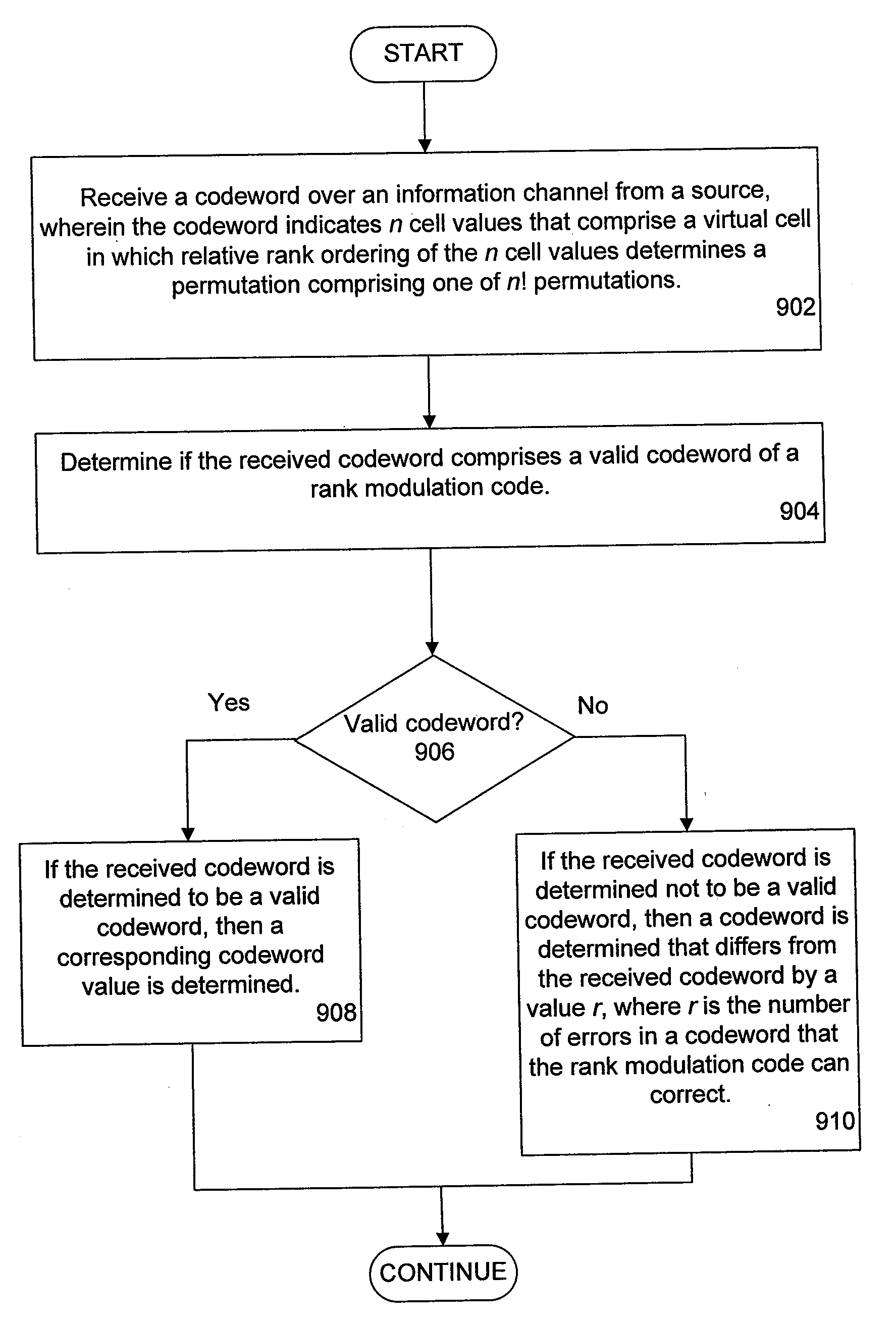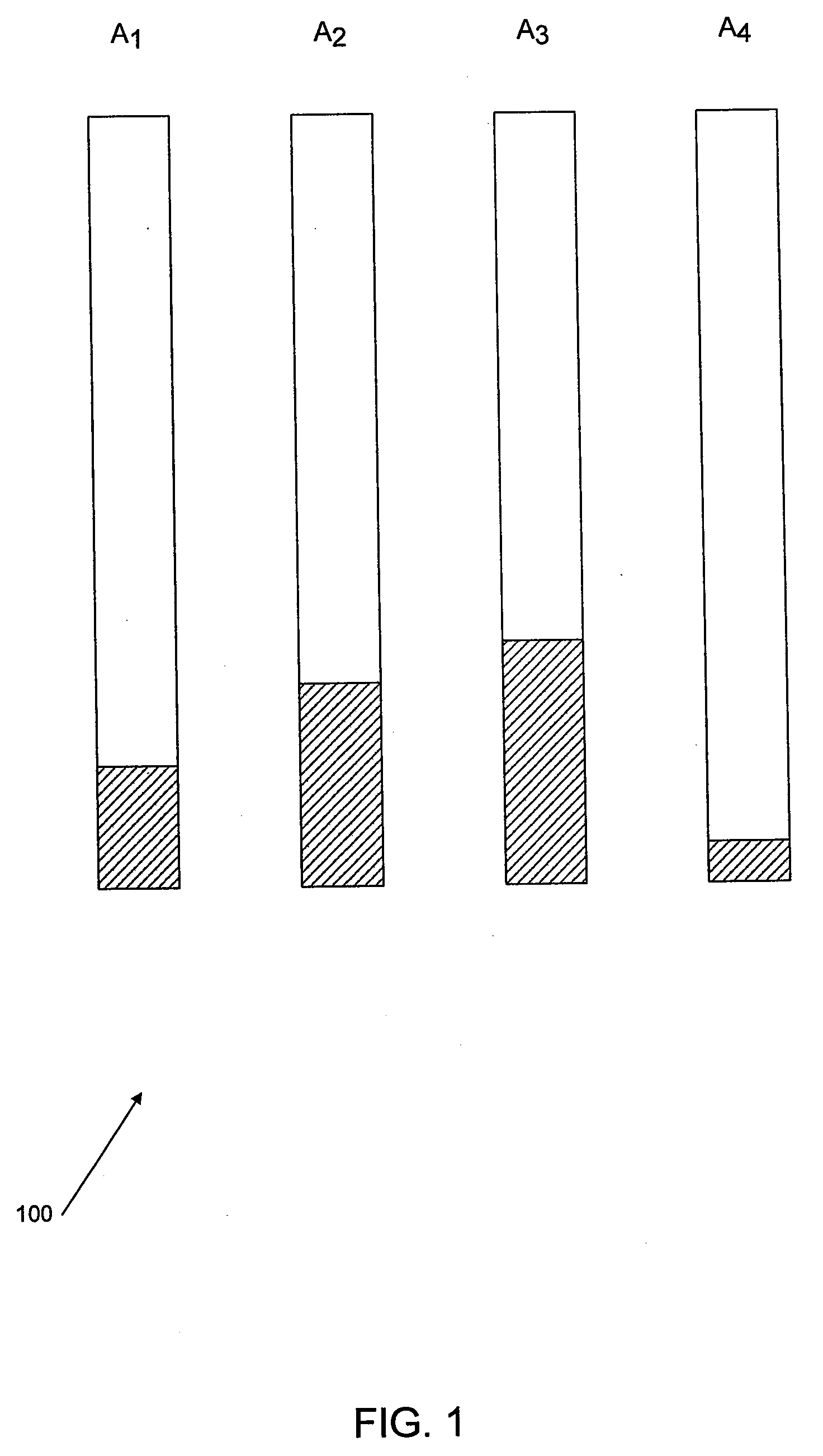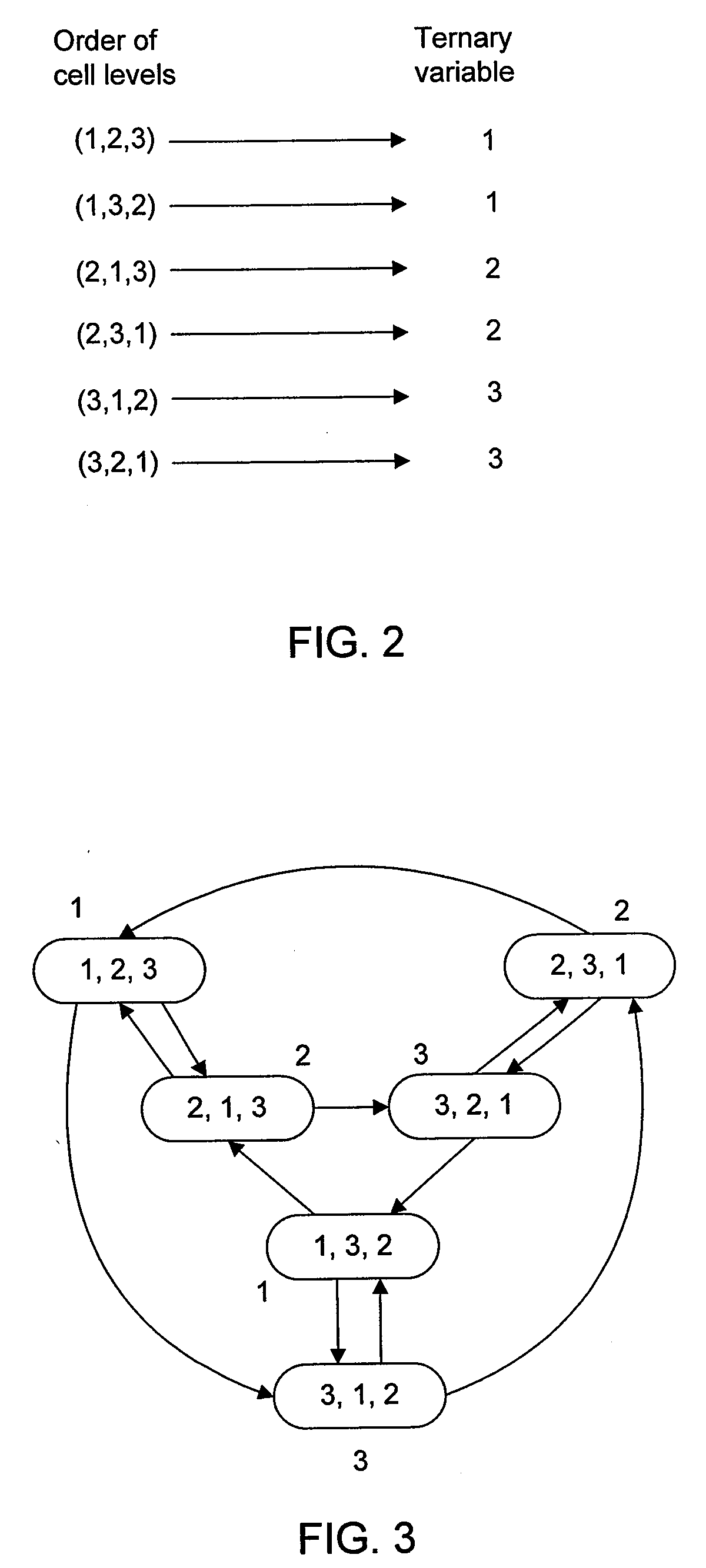Error correcting codes for rank modulation
a rank modulation and error correction technology, applied in the field of data storage devices, can solve the problems of limiting the improvement of flash memory speed, reliability, longevity, storage capacity, error becoming more common, and data reliability is limited, so as to reduce the effect of asymmetric errors and eliminate the risk of cell over-programming
- Summary
- Abstract
- Description
- Claims
- Application Information
AI Technical Summary
Benefits of technology
Problems solved by technology
Method used
Image
Examples
example 1
[0043]FIGS. 2, 3, and 4 illustrate a rank modulation coding scheme that uses three cells to represent a ternary variable. The mapping from the order of cell levels to the variable is shown in FIG. 2. The procedure for rewriting is illustrated in FIG. 3. It is actually relatively simple by examination of the drawings; in a grouping of cells, if a variable's value is changed from i to j, then the j-th cell's level is raised to be the highest level. That is, in the example, if the data to be stored is “1”, then the level of the first cell is raised to be the highest level (pushed to the top); if the data to be stored is “2”, then the level of the second cell is pushed to the top; if the data to be stored is “3”, then the level of the third cell is pushed to the top. An example of rewriting is shown in FIGS. 4A, 4B, and 4C, where the represented variable changes as from 3→2→1, and the order of the cell levels changes as (3, 2, 1)→(2, 3, 1)→(1, 2, 3). FIG. 4A represents (3, 2, 1), with c...
example 2
[0070]Let A=[1, 2, 3, 4, 5]. Then XA=(0, 0, 0, 0). If B=[3, 4, 2, 1, 5], then XB=(1, 2, 2, 0). If B=[5, 4, 3, 2, 1], then XB=(1, 2, 3, 4). The full set of permutations and their respective coordinates are shown in FIGS. 6A, 6B for the case of n=3 and in FIGS. 7A, 7B for the case of n=4.
[0071]The details of how to determine coordinates from a permutation will be explained further for n=5 in Example 2 above. The example permutation is given as B=[3, 4, 2, 1, 5]. For the first subsequence B2, involving “2”, the subsequence B2 in the permutation is [2, 1], so p2=1, and (2−p2)=1. For the next subsequence, involving “3”, the B3 permutation subsequence is [3, 2, 1], so p3=1, and 3−p3=2. For the subsequence involving “4”, the B4 subsequence is [3, 4, 2, 1], so p4=2, and 4−p4=2. Lastly, for “5”, the subsequence is [3, 4, 2, 1, 5], so p5=5, and 5−p5=0. Therefore, the coordinates of the permutation [3, 4, 2, 1, 5] are given by (1, 2, 2, 0). For the next case in the example, the example permuta...
PUM
 Login to View More
Login to View More Abstract
Description
Claims
Application Information
 Login to View More
Login to View More - R&D
- Intellectual Property
- Life Sciences
- Materials
- Tech Scout
- Unparalleled Data Quality
- Higher Quality Content
- 60% Fewer Hallucinations
Browse by: Latest US Patents, China's latest patents, Technical Efficacy Thesaurus, Application Domain, Technology Topic, Popular Technical Reports.
© 2025 PatSnap. All rights reserved.Legal|Privacy policy|Modern Slavery Act Transparency Statement|Sitemap|About US| Contact US: help@patsnap.com



